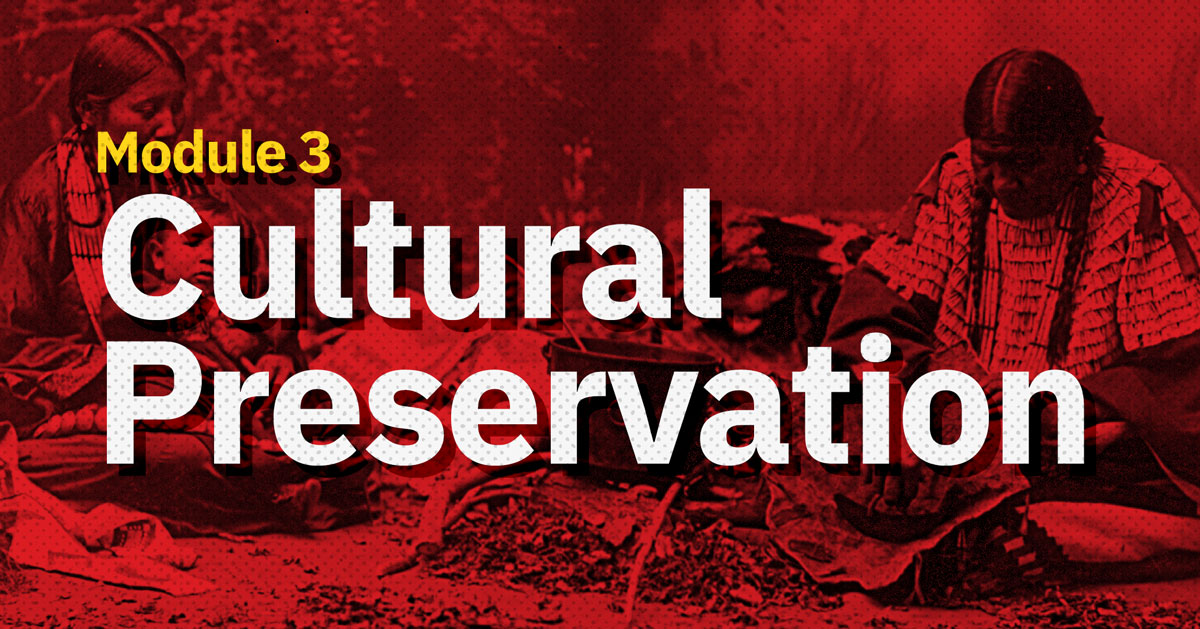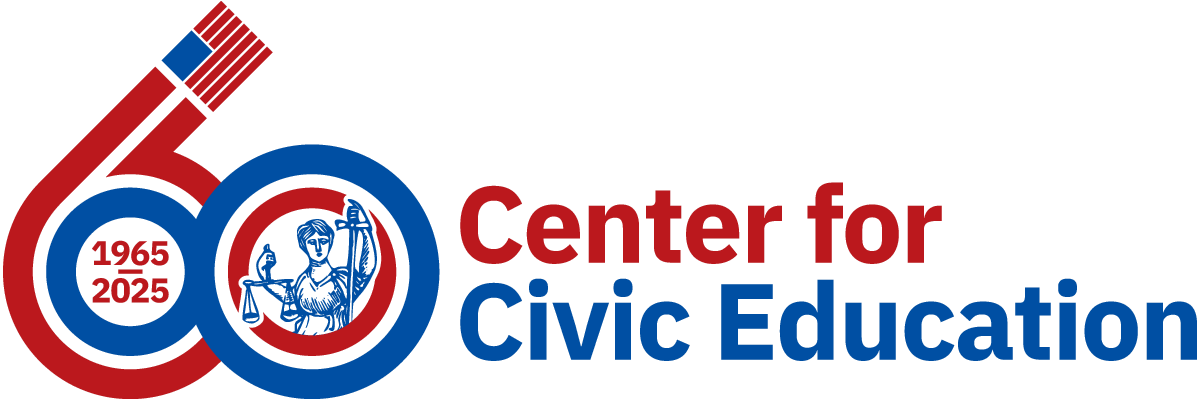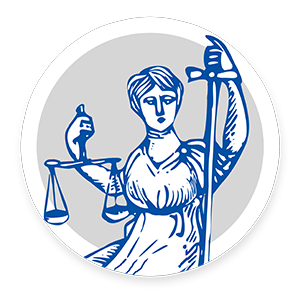
Module 3: Cultural Preservation
In this lesson, students will explore the rich cultural history of Indigenous and rural communities. This history is held in high regard, even to a sacred level, for these groups. America has been home to Indigenous people for thousands of years. Additionally, rural communities have their own traditions, but this heritage and its transmission from one generation to the next has not historically been protected.
Lesson Plan: Day 2
- Welcome the students to social studies class.
- Distribute the Observe and Wonder Winter Count Graphic Organizer and display an image of a winter count.
- Define what a winter count represents in Indigenous cultures. Explore the purpose of creating a winter count.
- Show the video about winter counts.
- Read the summary about winter counts in small groups. This is a summary of research from the Library of Congress and the Smithsonian National Museum of the American Indian. Record in your preservation notebook words, phrases, and ideas that will help you recall what winter counts are, what has happened over time to winter counts, and how they are being reimagined by a new generation of Indigenous memory-keepers.
- Conduct a class discussion:
- How is a winter count a form of cultural preservation?
- Why do you think it was important for Indigenous people to preserve their history in this form of record?
Universal Design for Learning (UDL)
- Allow students to work in pairs or small groups to discuss the video and article.
- Offer the article or video with audio options or translated summaries.
Multilingual Learners (ML)
Social-Emotional Learning (SEL)
Civic Skills & Dispositions
Extending Learning
- Using the vocabulary slide deck for Day 2 (slide 22), share aloud vocabulary words and a correct/incorrect definition. Instruct students to give a thumbs up to pick the correct definition and a thumbs down for the incorrect definition.
- Inform students they will be learning more about Indigenous cultures today. Students will visit learning culture stations to explore aspects of Indigenous cultures and traditions. Stations provided include the following:
- Divide students into either four groups (one station per group) or eight groups (create double stations to keep group sizes smaller).
- Provide an equal amount of time for student groups to visit each station. This will depend on the amount of instructional time available; it is recommended that groups spend 10 minutes at each station if time allows.
- Instruct students to start at one station; while at this first station, they should observe the topic relating to cultures and traditions of Indigenous communities. Student groups should engage in meaningful conversation and will discuss and take notes in the cultural preservation printable notebook, focusing on the following questions:
- What topic is the station sharing?
- What prior knowledge, if any, do you have regarding this tradition?
- What do you wonder about this tradition?
- Who started it?
- Why is it important in rural communities?
- Is it still relevant today?
- What has happened over time to this tradition?
- How is this tradition viewed today?
- What steps can be taken to culturally preserve this tradition?
- Student groups should rotate when asked by their teacher, who is facilitating groups and acting as the timekeeper.
- All student groups will have the opportunity to visit each station.
- Ensure that each student has recorded at least three observations from each station in their cultural preservation notebook.
Universal Design for Learning (UDL)
- Provide articles in multiple formats, including printed, digital, and with audio options.
Multilingual Learners (ML)
Social-Emotional Learning (SEL)
Civic Skills & Dispositions
Extending Learning
- Using the knowledge gathered from each cultural preservation station, recall the traditions shared at the four stations that students visited.
- Review the definition of modernization.
- Share the list of modernized Indigenous traditions with the class.
- Hold a class discussion regarding the ways that Indigenous communities can bring their cultures to the forefront of modern-day life and how these cultures can be modernized for today’s world.
Universal Design for Learning (UDL)
- Allow students to choose how they contribute to the discussion (e.g., speaking aloud, typing responses into a shared document, or writing responses).
Multilingual Learners (ML)
Social-Emotional Learning (SEL)
Civic Skills & Dispositions
Extending Learning
- Introduce the Indigenous Inalienable Rights video. Explain that it features an academic scholar answering the question, “Think about the cultural traditions that make your community special and unique. Are efforts being made to safeguard those traditions, or has the community turned its focus to modern ways of life? What impact does this have on your life and your community?”
- Play the Indigenous Inalienable Rights video, and as students watch, they should listen for how the speaker’s points relate their own own experiences about fairness and opportunity.
- Play the video again to ensure comprehension. Ask students to listen carefully to how the speaker talks about preserving culture by learning from community elders and to think about their experiences and culture that are important to them and their families.
- Ask students to imagine they are preparing their winter count and need to gather information from an older family member, elder, or friend in their community.
- Write three questions they would ask an
older family member or elder about their shared culture or traditions to help preserve their stories in their winter counts.
- Sample questions: What is a tradition that has been in your family or community for a long time? How did people in the past celebrate events like weddings, holidays, or other special days?
- Write three questions they would ask an
Universal Design for Learning (UDL)
- Allow students to brainstorm questions individually, with a partner, or in small groups.
- Offer a list of question stems or example questions to ask elders to inspire students, such as, “What traditions did your family celebrate when you were my age?”
Multilingual Learners (ML)
Social-Emotional Learning (SEL)
Civic Skills & Dispositions
Extending Learning
- Ask students to think about their own lives. Ask, “What are some important life events that have happened to you?” Then follow up with these questions:
- Have there been milestone birthdays you can remember?
- Have you had any personal celebrations that you are proud of?
- Have there been challenges that you overcame?
- Are there events that have helped you or hurt you?
- Ask students to brainstorm and story map three or four life events that they might include on a winter count of their own creation.
- Ask students to create their own versions of a winter count:
- Students should choose two or three life events that have made them the student they are today.
- Ask students to create each event in visual form, similar to the winter count resources from Observe & Wonder.
- Students can choose to leave gaps for years that they are not representing and revisit those years later on their own, or they can create their winter count in chronological event order for their life-event choices. Students can complete this using the My Winter Count handout.
Universal Design for Learning (UDL)
- Provide students with sentence starters or prompts (e.g., “A life event I would include is when …”).
- Allow students to create their winter count using either drawings, digital tools, or simple written descriptions if they prefer not to illustrate.
Multilingual Learners (ML)
Social-Emotional Learning (SEL)
Civic Skills & Dispositions
Extending Learning






